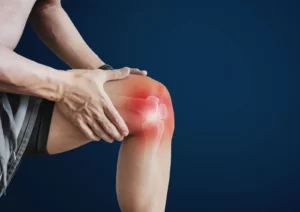You’re trying to get some physical activity, and something slips your foot. Boom! The pain is shocking and immediate, you’ve got a twisted ankle. Diagnosis at the right hour and treatment can heal the condition satisfactorily.
You’re trying to get some physical activity, and something slips your foot. Boom! The pain is shocking and immediate, you’ve got a twisted ankle. Diagnosis at the right hour and treatment can heal the condition satisfactorily. Negligence can lead to long-term complications.
Common pain medications and complete rest are enough for most twisted ankles. Although, more severe cases might need hospital admission. It’s always best to run some basic imaging tests to get a clear picture of the underlying damaged tissues. This will ensure proper treatment. And any future disability can be avoided.
If you ever get a twisted ankle, of course, you should let the doctors treat it.
However, reading up on the subject can make you confident about your treatment.
What Is A Twisted Ankle?
When an abnormal movement of the ankle damages the ligament enclosing it, the resulting injury is a twisted ankle. Mostly, ligaments on the outer side are involved.
Ligaments are tissues that connect the bones. They are elastic and tough. Ligaments permit a certain range of movements between the bones they connect. Thus, they maintain the stability of a joint.
Ligaments around the ankle joint are the same way. They don’t permit excessive rolling or twisting of the foot. So, when something like that happens in a sport or an accident, the ligament goes through a degree of tear. A greater degree of tear causes greater severity of twisted ankle.
What Is The Treatment Of A Twisted Ankle?
The treatment of a twisted ankle is done with two goals in mind. Firstly, relieving the immediate symptoms. Secondly, avoiding long-term complications. Pain medications, complete rest, and medical devices are used to treat immediate symptoms. Therapy and specialist consultation are needed for the long term. If time is a concern, consider an online consultation for expert advice on managing your ankle injury efficiently
Treatment Of Immediate Symptoms
Proper care of the immediate symptoms can help you from further complications.
These treatments are started immediately after the injury.
- R.I.C.E approach
R.I.C.E stands for rest, ice, compression, and elevation. After the injury, your foot should be in complete rest. Otherwise, the pain and swelling will only get worse. Depending on the severity, the rest period can be anywhere from one and a half weeks to even three months (severe case).
Apply an ice pack on the affected site. You can start this immediately after the injury. Repeat two to three every hour. Also, compress the site with an elastic bandage to stop the swelling from aggravating. If you have blood vessel disease consult a physician before applying ice or compression.
To avoid the build-up of inflammatory fluid, elevate the ankle at night. The main idea is to keep the ankle above your heart.
- Common pain medications
The usual pain medications such as ibuprofen or acetaminophen are used to treat the pain. The anti-inflammatory function of those medications also helps reduce the swelling. It is a good idea to eat vitamin-c rich fruits and vegetables during this period. The anti-inflammatory properties of citrus will help with healing.
- Crutches and bandages
As you cannot support your weight on the affected leg, you might need a crutch for normal movement. To stabilize the joint, the doctor will recommend an ankle brace. You can also use a sports tape or elastic bandage for this purpose. In more serious injuries, a cast or walking boot is used to keep the ankle joint at rest.
Treatment Of Long-Term Complications
If your ankle doesn’t show any sign of recovery within a week from the injury, consult a specialist, especially if your child needs care from experts in kids podiatrist Melbourne. This may be a physical medicine specialist, an orthopedic surgeon, a physiotherapist, or a podiatrist (a foot and ankle specialist who can evaluate ligament damage and guide rehabilitation).
The doctors might recommend physical therapy, mobility exercises, or advanced interventions depending on the severity of your injury.
In extreme surgery may become necessary to repair the torn ligament or broken bone. The goal of treatment is to restore mobility and function of the ankle.
How To Know You Have A Twisted Ankle?
The incident of injury and the symptoms are usually enough to know that you have a twisted ankle. However, you need a proper medical diagnosis to ensure the right treatment. After a physical examination, the doctor will recommend imaging tests to get a concrete idea of the underlying damage.
Physical Examination
When you visit the emergency room, the doctor will do a physical examination first. This includes examining the ankle and the foot. A doctor will check for swelling, bruising, tenderness, and the range of mobility in the affected area. Depending on the severity, they will recommend further investigations.
Medical Investigations
Medical imaging investigations help to exclude the possibility of a broken bone. Moreover, these tests give an idea about the degree of ligament damage. The tests include X-ray, MRI, CT scan, Ultrasound.
- X-rays
X-rays are the number one choice for visualizing hard bony tissues in the body. An X-ray machine passes minute radiation rays through your body. Subsequently, an image forms that show details of the hard structures. If there is any fracture in your ankle bones, the X-ray image will show.
- MRI
MRI or Magnetic Resonance Imaging does what the X-ray can’t. It shows the detailed condition of the soft tissues inside. In the case of a twisted ankle, this helps to visualize the condition of your damaged ligaments.
- CT-scan
A computed Tomography scan is like a three-dimensional X-ray. The doctor can visualize your ankle bones from all the different angles. As a result, all the doubts regarding a broken or fractured bone can be eliminated.
- Ultrasound
Ultrasound helps you to see what is happening inside your body in real-time. The condition of your tendons and ligaments in different positions becomes apparent to the physician. Always get your tests done at an authentic diagnostic center.
We at One Step Diagnostic provide all of these diagnostic services using the state of the art technology and with expert personnel. Check our services if you wish to learn more about our services.
Conclusion
You can type how to treat a twisted ankle in your search box and get many results. Reading up on the subject will enrich you with information.
But that doesn’t mean you can skip your physician consultation.
When you have a twisted ankle visit the ER as soon as possible and get the proper tests done. That is the only recommended way to treat your twisted ankle.




